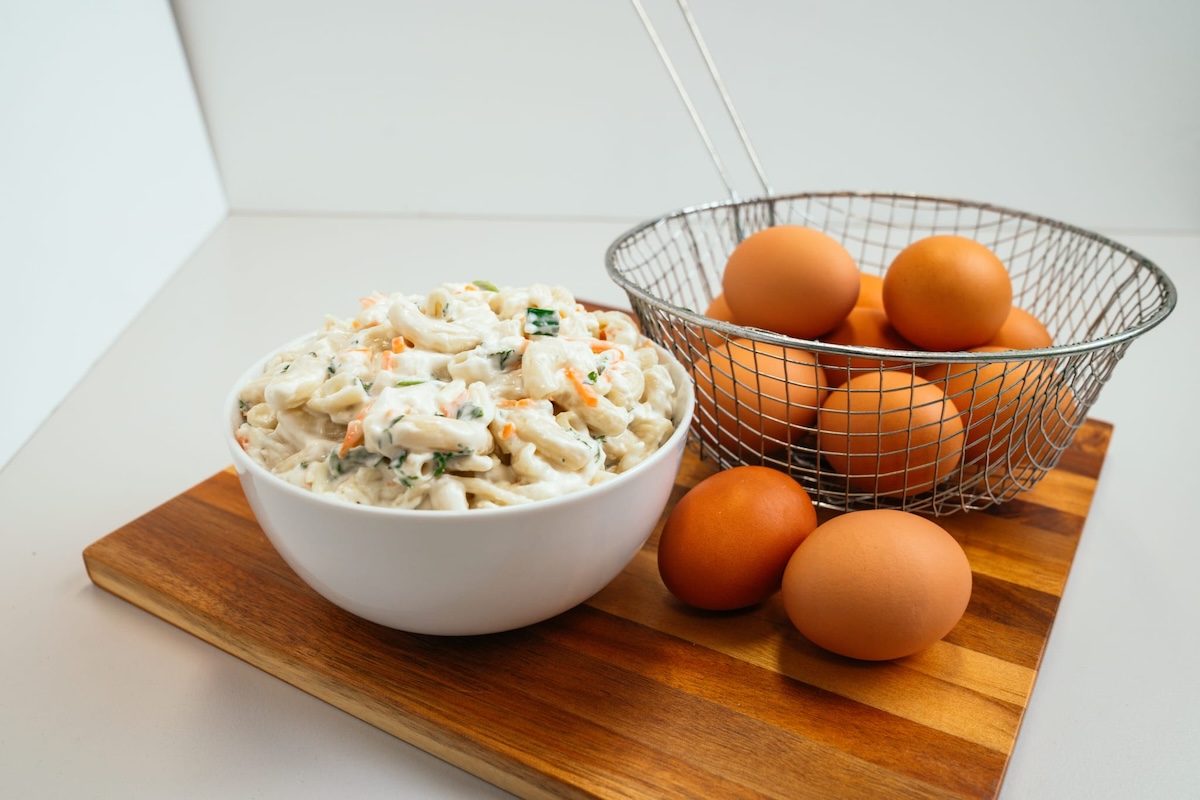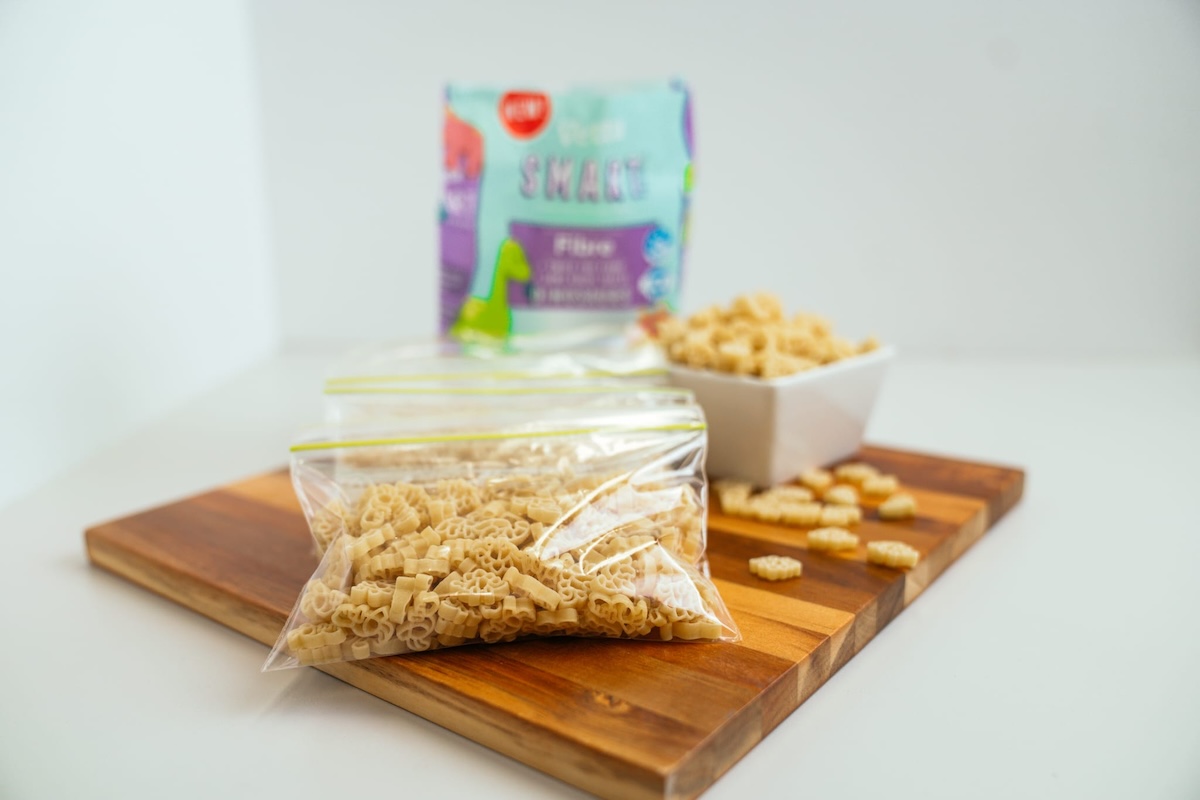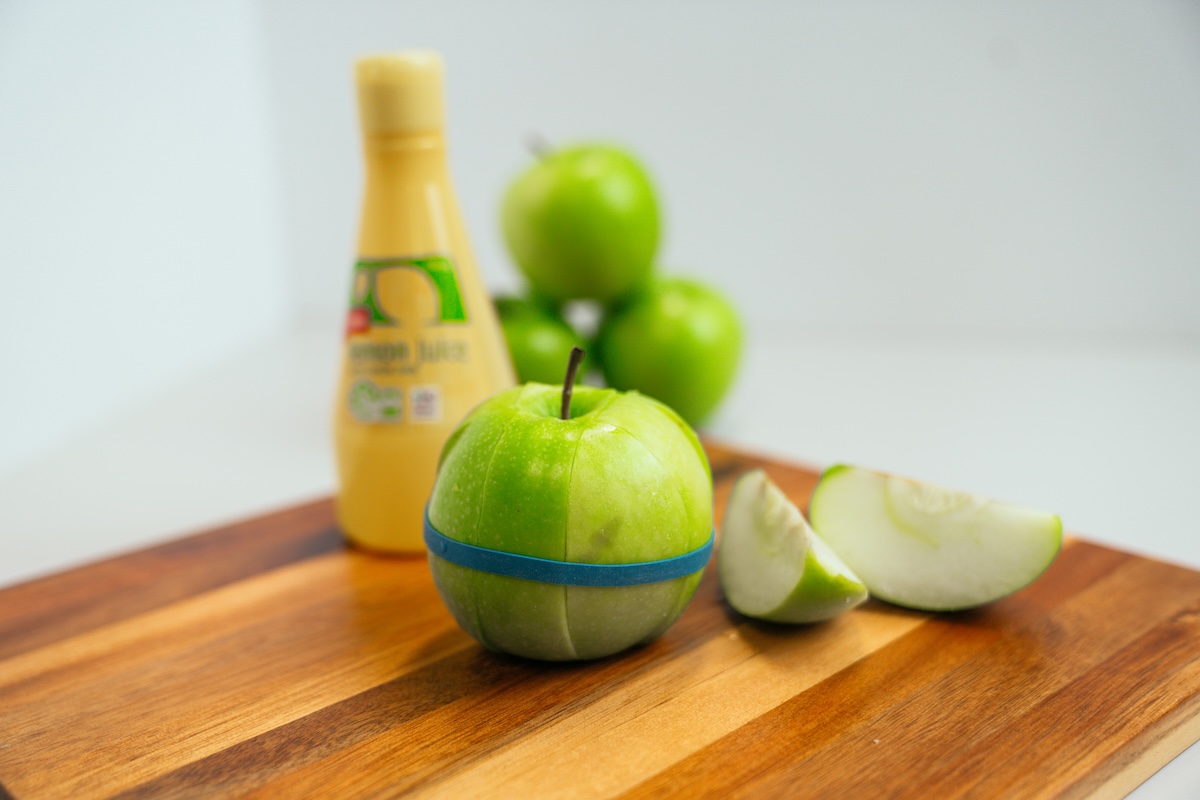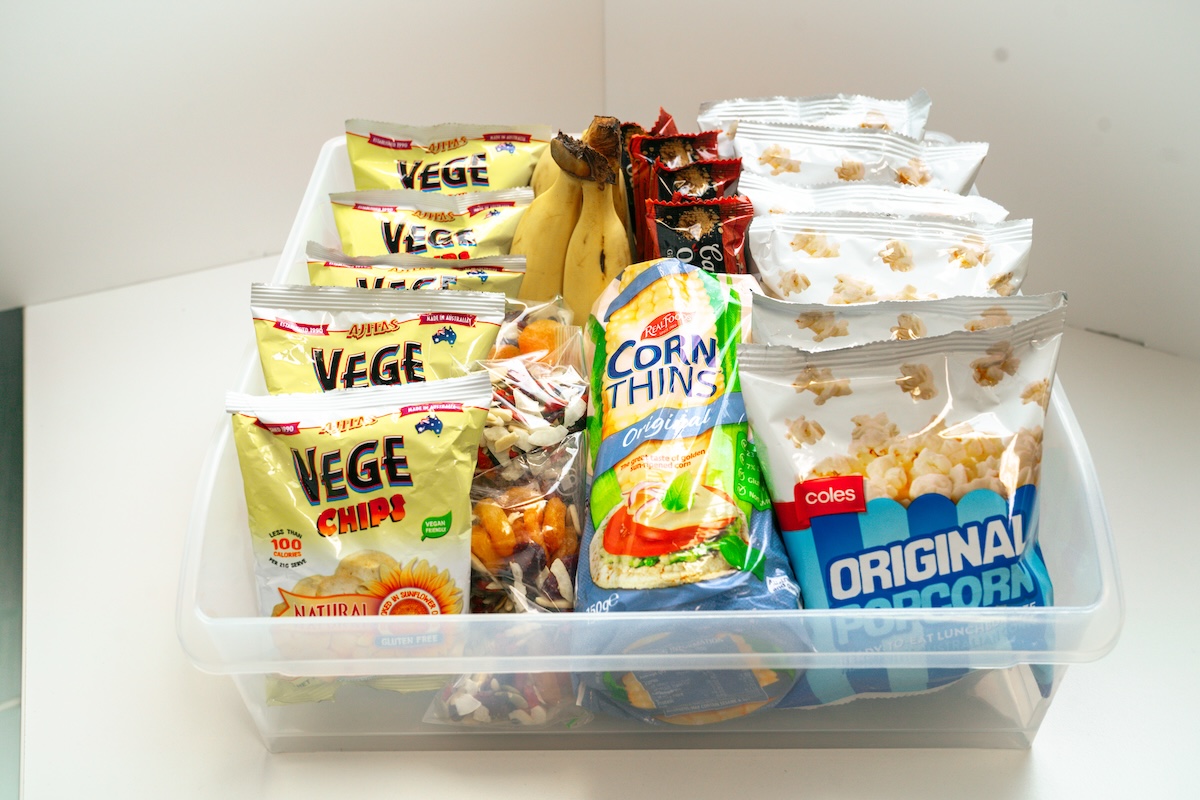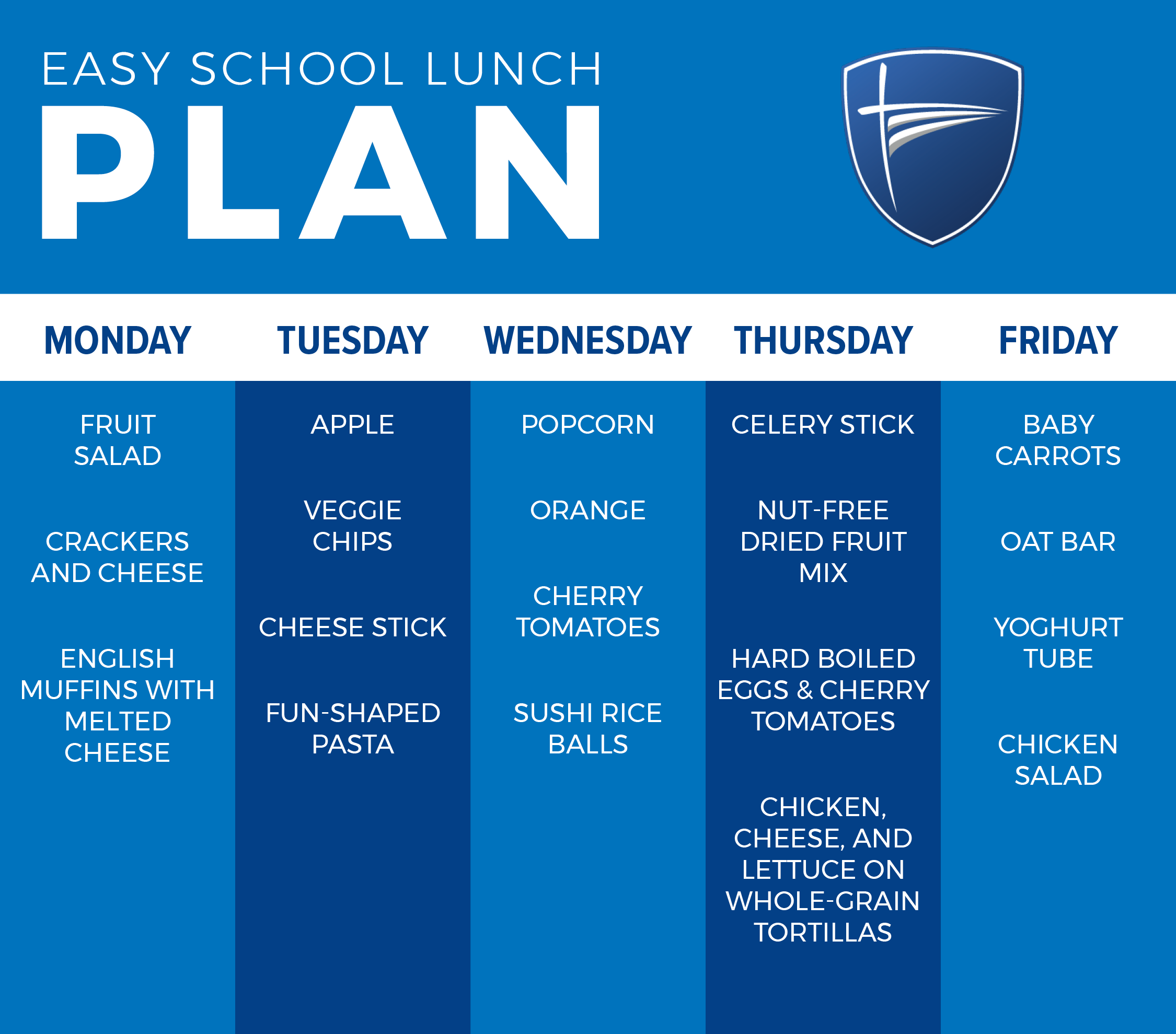School Lunch Ideas

Table of Contents
- Why Focus on School Lunches?
- Understanding Nutritional Needs for School-Aged Children
- The Impact of Unhealthy School Lunches on Students
- Parents vs Student Involvement
- Collaborative School Lunch Planning
- How to Order School Lunches Online
- The Role of Schools in Promoting Healthy Lunches
- Healthy School Lunches & Environmental Sustainability
- The Fundamentals of Healthy School Lunches
- Easy Lunch Ideas
- Easy School Lunch Plan
- Navigating Dietary Restrictions & Allergies
- Frequently Asked Questions
As a busy adult, certified Personal Trainer and HPE Teacher at ACC, I understand the challenge of raising healthy children while working during the day. Balancing these responsibilities, it becomes clear that good nutrition is a key pillar in supporting our children's overall wellbeing. But when it comes to actually putting this key pillar into action, some easy and nutritious school lunch ideas would be a great help. And that’s where this article should help you.
Healthy school lunches are more than just a midday meal; they are a crucial element in shaping a child's physical health, academic performance, and lifelong eating habits. This has been highlighted in recent studies revealing that school aged children who eat a balanced school lunch exhibit healthier patterns outside of school, including more regular meal times and healthier snacks at home. With increasing awareness of the significance of diet in children's lives, this article delves into the multifaceted world of healthy school lunches, offering insights and guidance for parents and educators alike.
Why Focus on School Lunches?
In the intricate dance of shaping our children's well-being, the impact of a balanced school lunch extends beyond the canteen, addressing the fundamental question of why we should focus on school lunches. Research underscores a vital connection between a nutritious midday meal and enduring healthy eating patterns in and out of school.
Children partaking in well-rounded school lunches exhibit a ripple effect of positive choices, transcending the lunch hour. This not only supports their immediate well-being but also lays the foundation for lifelong healthy habits. Recent study insights reveal that daily consumption of school meals correlates with elevated levels of essential nutrients. These nourishing meals not only contribute to a healthier dietary profile but also emphasise the pivotal role of regularly consumed school lunches in fostering a foundation of health for our children. As parents and educators, recognising these findings propels us into a multifaceted exploration of the pivotal role that healthy school lunches play in our children's lives, unravelling insights and guidance for thoughtful and nutritious choices.
Understanding Nutritional Needs for School-Aged Children
Nutrition plays a pivotal role in the physical and cognitive development of school-aged children. Essential nutrients like proteins, carbohydrates, vitamins, and minerals each play unique roles in supporting growth, energy levels, brain function, and overall health. Adhering to dietary guidelines and understanding the nutritional requirements specific to different age groups is fundamental in planning healthy school lunches.
The Impact of Unhealthy School Lunches on Students
Sugar Highs and Crashes
Unhealthy school lunches, high in sugars, trigger energy spikes followed by crashes, impacting students' ability to stay focused and engaged in class.
Cognitive Function
Poor nutrition hampers cognitive development, affecting memory, problem-solving skills, and overall brain function in students.
Academic Performance and Behaviour
Inadequate diets are linked to lower academic achievements and behavioural issues, hindering students' ability to learn and engage positively in the classroom.
Decreased Concentration
Sugary, processed foods contribute to decreased concentration levels, impairing students' focus, information retention, and task completion.
Mood and Social Interactions
Unhealthy lunches influence mood swings and irritability, impacting students' social interactions and hindering the development of positive relationships in school.
Parents vs Student Involvement
Navigating the school lunch dilemma is a familiar journey for us parents. There's nothing worse than discovering a half-eaten sandwich and bruised fruit in your kid's lunchbox. In my own experiences, I've occasionally given in to my child's less-than-healthy requests just to avoid the inevitable 'healthy eating lecture.'
But, I've come to realise that letting our kids dictate their own lunches is far from striking a healthy balance. As parents, it's our responsibility to care for and protect our children, even from their own food choices. Involving them in weekly lunch planning, however, has been a game-changer.
Collaborative School Lunch Planning
You could individually talk with each child and open a document, neatly organised into day columns with headings for recess and lunch. Also can go through the week's menu together. By embracing the convenience of online grocery shopping, they even get to watch what you did and add each item to the virtual cart.
Instead of simply saying "no" to their requests for chocolate bars during recess, it has become a collaborative discussion. You could ask, "What could be a healthier alternative to chocolate that you would enjoy? How about trying this muesli bar?"
In the end, this collaborative approach not only ensures that my children are making healthier choices, but it also gives them a sense of ownership over their meals. No more disappointing surprises in their lunchboxes – just a balanced and satisfying array of foods that we've all agreed upon.
How to Order School Lunches Online
In a heavily online world, ordering food online has become incredibly streamlined, especially in recent years.
Online Grocery Shopping
Many of the major grocery chains including Woolworths and Coles have made ordering online extremely simple. You can input lists in your profile and have your entire order finalised within a couple of minutes!
School Canteens
Many schools now have their canteen’s lunch order system completely accessible online for the convenience of parents. From here, you can order lunches in advance - gone are the days of brown paper bags with black permanent marker orders! Depending on the platform you can schedule this for a particular day and pay online.
This pre-reordering system can effectively lead students to pick healthier entrées. A case study of students who selected their entrée in the lunch line, where decisions are biassed by aromas and sights of tasty, less healthy foods, decreased selection of healthy entrées by 48% and increased selection of less healthy entrées by 21%. This highlights the impact of thoughtful and planned meal decisions.
The Role of Schools in Promoting Healthy Lunches
Schools have a significant responsibility in promoting healthy eating. There are a few key discussions that have been circling school communities on how involved schools should be in student’s eating habits…
Should schools check students' lunch boxes?
The ongoing debate over whether schools should scrutinise the contents of students' lunch boxes revolves around finding a delicate balance between respecting parental choices and ensuring the well-being of students. Striking this balance involves a nuanced consideration of privacy, personal choices, and the overall health of the student body.
Why schools should have healthier lunches
The urgency of promoting healthier lunches in Australian schools is underscored by alarming statistics on childhood obesity. In Australia, approximately 25% of children and adolescents aged 5-17 are classified as overweight or obese. This statistic highlights the critical need for schools to take an active role in addressing this health crisis by implementing measures that encourage nutritious eating habits.
Why should schools provide healthy lunches?
The provision of healthier lunches by school canteens is not just a matter of preference; it is an imperative. Beyond addressing obesity concerns, Australian schools should take the lead in offering nutritious meal options to students for compelling reasons, including case studies revealing improvements to the nutrition standards for foods offered in competition with federally reimbursable schools meals may enhance the positive effects of school meal programs on student eating behaviour.
The 2020 school lunch trial in Tasmania, informed by a Churchill Fellowship, showcased the viability of providing sit-down cooked meals in schools. Funded through a Healthy Tasmania grant and executed by School Food Matters Inc, the pilot in three schools offered free, nutritious, cooked lunches for 20 days, using seasonal produce. Notable outcomes included positive student experiences, reduced behavioural issues, increased attendance, and strong parental support. The average food cost per student was $1.91 for ingredients only and $4.72 for ingredients and labour. The success of the trial led to a $1.87 million allocation in 2022 by the Tasmanian Government to expand the program to 15 schools. The initiative serves as a promising model for a potential universal, national school lunch program, supported by tangible benefits observed during the pilot.
What’s more, there is a direct correlation between nutrition and academic performance. Children who regularly consumed school lunch on a daily basis demonstrated significantly higher levels of energy and absolute nutrient intake in comparison to those who ate school lunch less than five times a week, without energy standardisation. The connection between healthy eating and improved cognitive function, enhanced concentration, and overall better academic outcomes is well established. Therefore, by offering healthier lunches, schools are essentially laying the groundwork for success for Australian students in both their academic pursuits and overall well-being.
Healthy School Lunches & Environmental Sustainability
Sustainable practices in school lunch programs are not just good for the health of students but also for the planet. Emphasising locally sourced foods and eco-friendly practices in meal preparation and packaging can have a positive environmental impact. This can include sourcing produce from local farmers markets or even growing your own produce if you have space for a small veggie patch in your backyard.
Making simple switches from single-use plastics such as zip lock bags to containers is a great way to make a positive environmental impact and set these good habits in our children that will stick with them into adulthood.
The Fundamentals of Healthy School Lunches
Ensuring our students receive a diverse array of proteins, healthy fats, and carbs is essential for their nutrition. Here are some smart choices to include within school lunch boxes:
Proteins:
- Chicken
- Turkey
- Beans
- Tofu
Carbs:
- Whole-grain bread
- Whole-grain pasta
- Rice
Healthy Fats:
- Olive oil
- Cheese
- Avocados
- Nuts (pending school policies – consider as an after-school snack)
Vitamins and Fibre from Fruits and Veggies:
Incorporating a variety of fruits and vegetables is crucial for providing essential vitamins and fibre. This balanced framework ensures our children are nourishing their bodies appropriately.
Easy Lunch Ideas
School lunches can quickly become overwhelming and time-consuming. The following provides straightforward tips and meal planning ideas that effortlessly meet nutritional goals.
Flexible Lunch Plan
- Set a flexible lunch plan for the week, designating a main food item for each day along with easy sides.
Prepare Multipurpose Ingredients
- Streamline your efforts by preparing versatile ingredients like pasta salad and hard-boiled eggs that can be used throughout the week.
Freeze Favourite Sandwiches
- Freeze a batch of your child’s favourite sandwiches – grab one in the morning, and it'll be thawed by lunchtime.
Single Serves of Pasta
- Freeze single servings of pasta and thaw them when packing your child’s lunchbox in the morning.
Pre-sliced Apples
- Slice apples and other fruits the night before, securing freshness by placing a rubber band around sliced apples to prevent browning.
Frozen Drinks as Ice Packs
- Freeze drinks; they'll serve as both a cooling agent and a refreshing beverage by lunchtime.
Snack Station Freedom
- Create a 'snack station' with dry goods on the counter and perishables in the fridge, allowing your child to choose their snacks.
Interactive Shopping List
- Pin up a shopping list near the 'snack station,' encouraging your child to add items when they run out.
Playful Sandwich Shapes
- Make sandwiches more appealing by cutting them into playful shapes using cookie cutters.
Compartmentalised Lunch Boxes
- Invest in lunchboxes with divided compartments to separate foods and reduce packaging.
Skewer Sandwiches for Variety
- Introduce variety with sandwich skewers, providing a creative twist to the traditional lunch.
Easy School Lunch Plan
Simplify your school lunch routine with these easy tips and straightforward meal plans that prioritise nutrition without sacrificing convenience.
Monday:
- Fruit salad
- Crackers and cheese
- English muffins with melted cheese
Tuesday:
- Apple
- Veggie chips
- Cheese stick
- Fun-shaped pasta
Wednesday:
- Popcorn
- Orange
- Cherry tomatoes
- Sushi rice balls
Thursday:
- Celery stick
- Nut-free dried fruit mix
- Hard-boiled eggs & cherry tomatoes
- Chicken, cheese, and lettuce on whole-grain tortillas
Friday:
- Baby carrots
- Oat bar
- Yoghurt tube
- Chicken salad
Navigating Dietary Restrictions & Allergies
For those with dietary restrictions or allergies, simple swaps can make all the difference:
Gluten-Free Options
Swap regular bread for:
- Rice dishes
- Vermicelli noodles
- Sweet potato wraps
- Chickpea pasta
Dairy-Free Alternatives
Embrace these dairy-free options for a lactose-friendly meal:
- Coconut yoghurt
- Nut-based cheeses
- Avocado-based spreads
- Olive oil for dressings and flavour
- Non-dairy milk options like almond, soy, or oat milk
Ensuring your child's lunch box accommodates dietary needs fosters an inclusive environment while providing nutritious and delicious alternatives. Remember to check ingredient labels and explore a variety of dairy-free options to keep lunches exciting and suitable for all dietary preferences.
Frequently Asked Questions
Q: My child is a picky eater. How can I ensure they eat healthy school lunches?
A: It can be challenging when dealing with picky eaters, but involving them in the meal planning process can help. Try offering a variety of options and letting them choose what goes into their lunchbox. You can also make healthy foods more appealing by presenting them in fun shapes or combinations.
Q: How can I accommodate my child's food allergies or dietary restrictions?
A: When packing school lunches for a child with food allergies or dietary restrictions, it's important to read labels carefully and avoid any allergens. There are many alternatives available, such as gluten-free bread or dairy-free cheese, that can still provide nutritious options for your child.
Q: What are some budget-friendly options for healthy school lunches?
A: Packing healthy school lunches doesn't have to break the bank. Consider buying in bulk, meal prepping ahead of time, and using leftovers creatively. Simple options like sandwiches, salads, and homemade snacks can be both nutritious and cost-effective.
Q: How can I ensure my child's lunch stays fresh until lunchtime?
A: Invest in insulated lunch bags or containers to keep food at the right temperature until lunchtime. Pack items like sandwiches, fruits, and veggies in separate containers to prevent them from getting soggy. You can also freeze drinks or use frozen gel packs to keep the lunchbox cool.
Q: Are there any guidelines or regulations for school lunches that I should be aware of?
A: School lunch regulations vary by region, but many schools have guidelines in place to ensure that meals meet certain nutritional standards. Check with your child's school or district for specific guidelines and resources available for packing healthy lunches.
Q: How can I encourage my child to try new foods?
A: Encourage your child to try new foods by offering small portions and praising their efforts. You can also involve them in meal preparation or grocery shopping to help them feel more invested in the process. Lead by example by trying new foods yourself and demonstrating an adventurous attitude towards eating.


